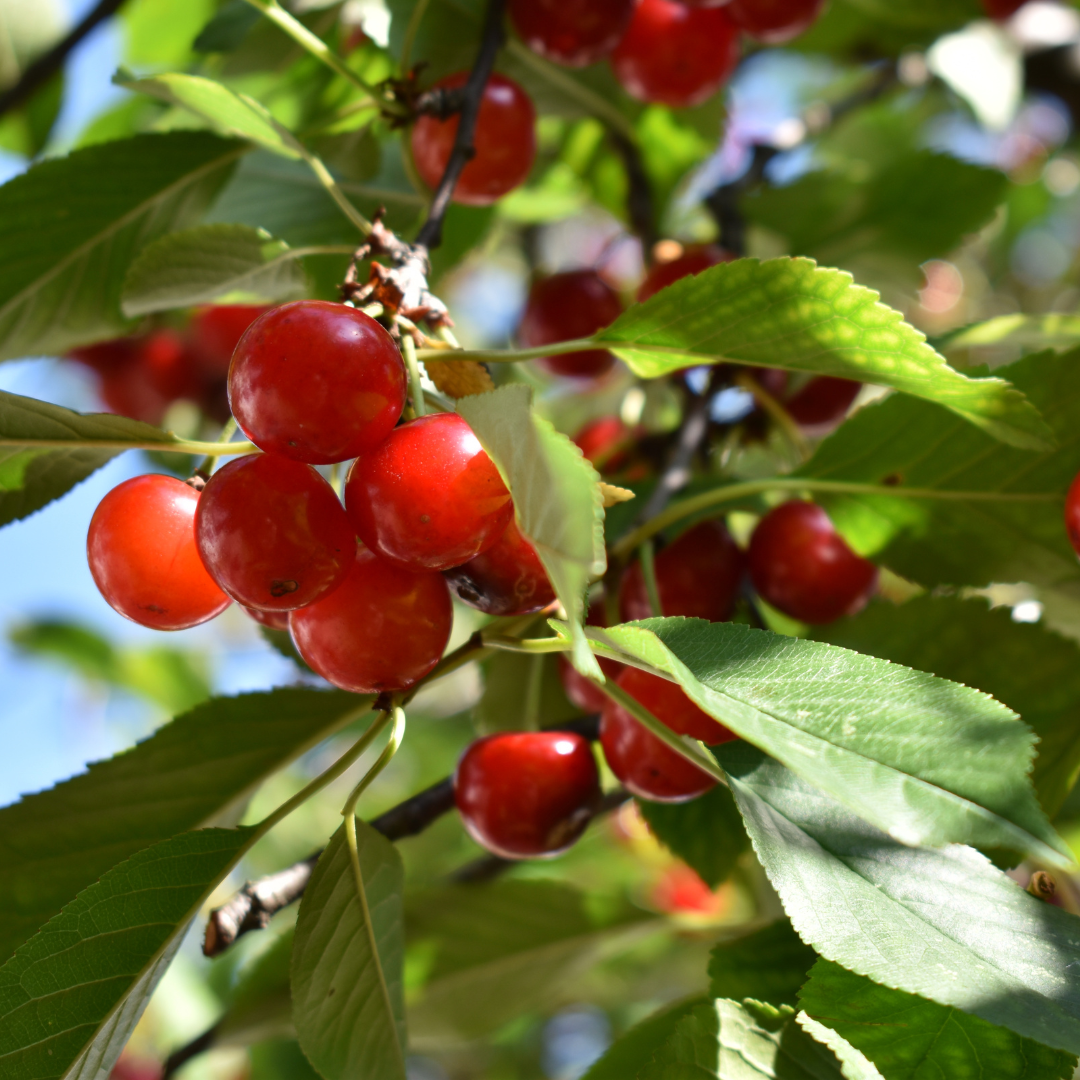Wild Cherry Tree
The Wild Cherry Tree (Crann silín fiáin) is one of Ireland's most attractive native trees. Its beauty, and its fruit, have made it one of Ireland’s most respected, protected trees throughout history & it continues to be a popular tree around the country today. Its scented flowers are particularly appealing to insects & it’s easily recognizable, white cherry blossoms are a joy for any fortunate individual who may lay eyes on them.
In spring, the Wild Cherry Tree can be seen from miles away due to its beautiful, bright, white (or very pale pink) flowers. This is followed by hanging cherries in Autumn, which can be either sour or sweet to taste depending on the specific tree. The seeds of these cherries are eaten and dispersed by many birds such as blackbirds and thrush, as well as numerous mammals like badgers and pine marten.
Wild cherry belongs to the genus Prunus and is a member of the Rose family (Rosaceae). It is a deciduous tree, which can grow up to 30 meters high. The Wild Cherry does not have a long-lived species, and it can begin to rot after 60 years.
The bark of the Wild Cherry is easily identifiable due to its reddish-brown color, prominent horizontal lines, and its peeling texture. Its leaves are oval-shaped, doubly toothed, and have pointed tips. It’s native to the UK, Ireland & most of Europe (apart from the Far North). The tree is often found in old field hedgerows where they may have been planted by farmers, but they are also found in mixed deciduous woodlands & along boundaries.
The Wild Cherry Tree has an illustrious history in Irish society & mythology, spanning over a thousand years. It was long considered to be a symbol of youthfulness, beauty & love, due to its incredible flowers & bountiful fruit. It was also held in high esteem as a native Irish tree in the ancient Irish Legal System.
Early Irish law (Brehon Law), which functioned until the 17th century was incredibly forward-thinking for its time, replacing corporal punishment with fines and other forms of restitution. It provided extensive protection for trees, classified into four groups: Nobles of the Wood, Commoners of the Wood, Lower Divisions of the Wood, and Bushes of the Wood. The wild-cherry tree was classified in the second highest rank in the Commoners of the Wood classification, along with Rowan & Hawthorn, which are similarly fruitful trees.
The price of cutting down one of these trees during this time was a fine of the price of two and a half milch cows, (a milch cow was a cow kept for her milk). This was a relatively lenient punishment, as the penalty for unlawfully felling a chieftain tree could be the same as the penalty for killing a human chief.
At Cloudforests, we are excited to plant numerous Wild Cherry Trees in our upcoming Gift Tree Grove, which will begin development later this year. This beautiful species will join a whole range of spectacular, native Irish Trees, at the Grove being funded by our gift tree purchasers and CoolPartners.
If you’d like to buy a Native Irish tree planted on our Gift Tree Grove at Cloudforest One, simply follow the link below:




